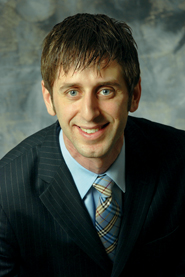In September, State Street will debut a buyside-to-buyside matching service that will introduce another new highly-automated approach to foreign exchange trading.
We just think this is a good alternative, and that fund managers would like to have an option that they really dont have today in terms of a matching service that is common in other markets, said Mark Snyder, executive vice president and head of sales, trading and research at State Street Global Markets. They exist in equities, they exist in fixed income, and they really dont exist at all in foreign exchange.
In the case of State Streets new service, called TruCross/FX, buyside firms will submit trades to be matched automatically at times of day when the benchmark WM Reuters rates are being calculated. If there is any order imbalance or tail, the tail will be worked algorithmically into the market during the same window that the benchmark WM Reuters rate is being calculated. State Street says the new system would also avoid the risk of information leakage as the system automatically receives and matches trades without human intervention. The service will be offered as another destination on FX Connect, the multi-dealer platform that State Street owns and developed.
TruCross/FX may be another example of what analysts and observers see as a growing push toward automated and algorithmic trading in FX. As FX is a fragmented market with no central limit order book, firms have traditionally relied on brokers for market color and pricing. But Greenwich Associates estimates that 74 percent of FX volume is now traded online, up from 43 percent in 2004. In 2013, 11 percent of FX users reported using algorithmic trading models or execution tools, but based on its survey of the market Greenwich Associates expects that percentage could rise 68 percent next year, with many survey respondents reporting plans to begin employing algorithms within a year.

A combination factors including market conditions as well as recent headline-grabbing investigations into potential rate fixing may push the market further toward electronic and algorithmic trading, says Greenwich Associates analyst Kevin McPartland. Resources have thinned, fewer people are on the trading desk, and senior managers are spending a disproportionate amount of time dealing with regulations and other issues. Meanwhile, in light of the recent FX controversies, sales people who might not want to give the perception that they are using one clients order to help another client, are growing increasingly cautious about sharing market color.
By and large, why clients pick up the phone is to get market color, McPartland said. If they cant get that over the phone, theyll trade electronically which will be cheaper in the end and will give them a little more control.
Other market participants have also seen a shift. Jake Loveless, co-founder of low latency infrastructure provider Lucera, which launched a transaction cost analysis (TCA)-based FX matching engine in May, said that as early as 2010 the team that created Lucera began to see a rise in agency desks that were starting to take market share from incumbent multi-dealer platforms. The rise of the agency desk mean that there were more destinations, not less and you were taking a market that was already global and you were getting more and more fragmentation, he said.
More recently, Loveless says, he has seen an increase in new types of players in the FX market. In particular, he suggests that low interest rates are pushing professional market makers who had been making markets in other markets like futures into FX. Many of these new players bring with them algorithmic sophistication, he said.
Ive seen people take the futures price in the CME, imply the spot, make you a market in the spot. They bring a new type of liquidity to the market, non-bank liquidity, he told Traders. Thats a phenomenon weve seen over the past three years, but definitely accelerated over the past year.
Loveless adds that he has seen an increase in what he called transaction cost analysis players who are trading other assets for which foreign exchange might be a small component. Before there was enough volatility and spread and volume that the FX risk was important to hedge out but the efficiency of that risk wasnt as important, he said. All of a sudden the extra tenth of a pip of foreign exchange risk could be the difference between you winning that client business and not winning that client business.
While TCA is not a new discipline in FX, interest has grown steadily, says John Adam, Portwares global head of product management. Portware, a multi-asset system, launched a TCA tool for its FX platform several years ago called FX liquidity monitor, or FXLM. The minute an asset class goes electronic, and I have a proliferation of venues and different places where I can take that electronic order, that necessitates TCA, Adam said. Now the trader on the desk can make a decision of where the order goes and they need to demonstrate the value gained by selecting venue A over venue B. Its really beginning to establish itself as critical especially for large institutional desks.
The trend Adam sees is an increased blurring of the line between algorithms and the TCA that drives them. Meanwhile, Portware has seen an overall increase in the comfort-level that FX clients have with algorithmic trading. Portware offers several varieties of algorithms that clients can use or customize, but Adam said he is also seeing an increase in buyside firms relying on their own algorithms.
If you had told me three years ago that I would have a client that was doing 90 percent of its business with its own algorithms, I would have said fine, but I dont think thats likely to happen.




